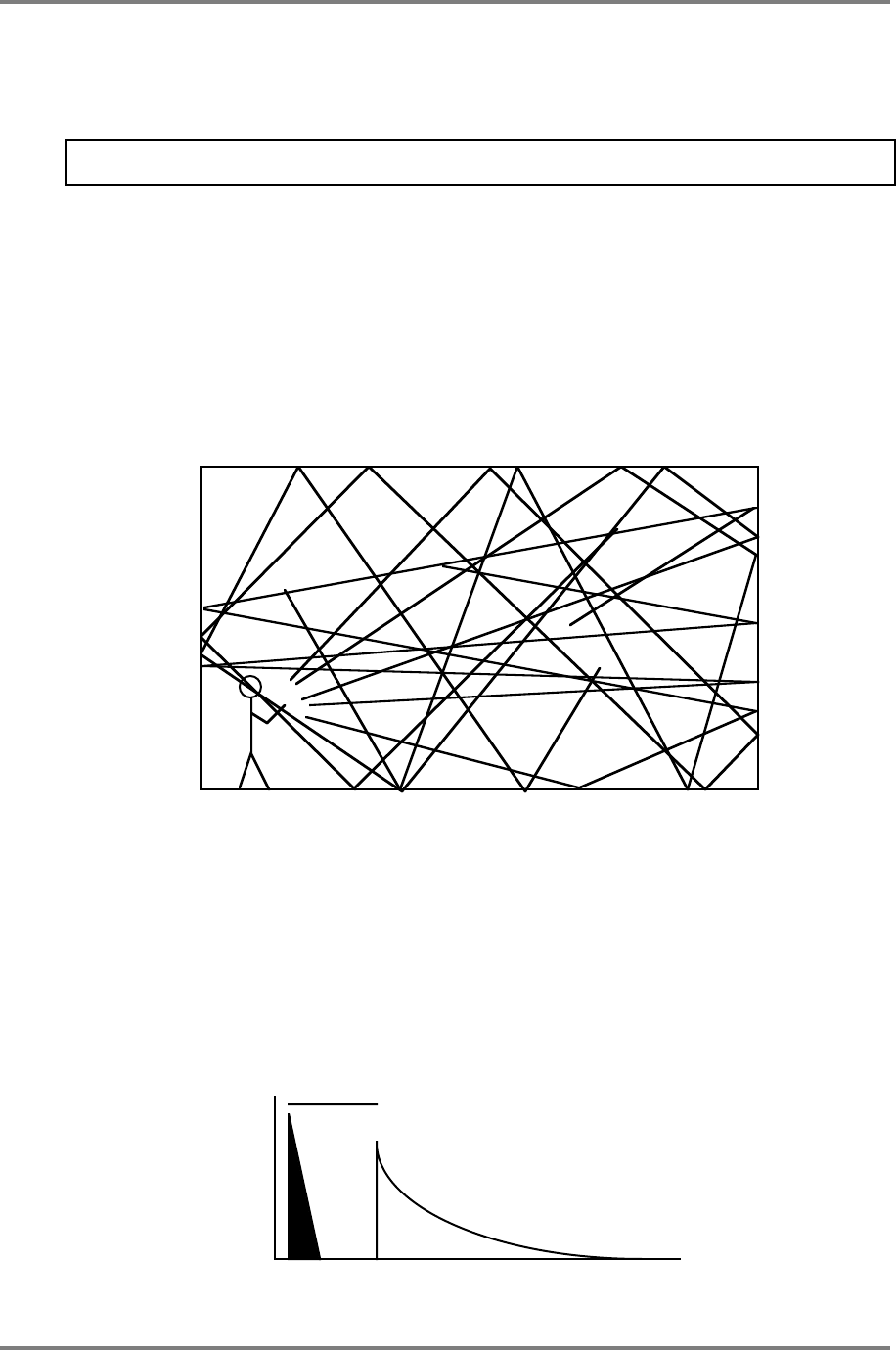
EFFECTS EDIT
CD3000XL OperatorÕs Manual Page 197
REVERB EFFECTS
Besides all the effects described so far, the effects processor also has a reverb effect on each
of the four channels.
NOTE: The multi effects described above relate only to the multi-effects channels 1 and 2.
They are not available on effects channels 3 and 4 which are reverb only.
Reverb is a delay effect we experience almost everyday. Whether we are in a bathroom or a
cathedral, most acoustic environments have some form of reverberant characteristic. It is
probably THE most important effect and has the most pronounced effect (no pun intended) on
our perception of a sound largely because we are so used to hearing it all around us every day.
This is why a sound with reverb (even if it is just the smallest hint) sounds better and more ‘alive’
and realistic than a ‘dry’ sound with no reverb.
If you imagine you are in a large hall and you clap your hands, the sound travels outwards to the
walls and bounces off them and we hear those reflections. Because the reflections are
bouncing off the walls at many different angles, the effect is that you hear the familiar
reverberant ‘smudge’ or ring after the initial sound.
In this example, we can only see the one elevation but the sound will also be bouncing off the
side walls as well as the walls behind you to build up a dense reverberation pattern.
Characteristics of the room determine the sound of the reverberation. For example, a large
room or hall will give a long reverberant decay but, the same room or hall filled with wall-to-wall
velvet drapes will give a shorter, duller reverberation as the drapes absorb all the high
frequencies. In a small tiled room, you can get quite a pleasing short reverb (which is why so
many people sing in the shower!) where the highly reflective tiled surfaces cause the sound to
bounce around and build up a dense reverberation quite quickly. It also takes a certain time for
the sound to get to the walls and then travel back to your ears - this is called the PRE-DELAY
time and the larger the acoustic environment, the longer the pre-delay time (usually!).
Graphically, reverb ‘looks’ a bit like this:
PRE-DELAY
DECAY TIME
SOUND REVERBERATION


















